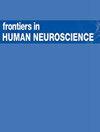Case report: Gait-induced palilalia in a patient with hemiplegia due to cerebral infarction
IF 2.4
3区 医学
Q3 NEUROSCIENCES
引用次数: 0
Abstract
BackgroundPalilalia is a type of speech characterized by compulsive repetition of words, phrases, or syllables. Several reports have noted that palilalia can occur in response to external verbal stimuli. Here, we report, for the first time, a patient with palilalia induced by gait, which we call “movement-related palilalia.”Case presentationEleven months after the onset of cerebral infarction sparing the right precentral gyrus and its adjacent subcortical regions, a 63-year-old, left-handed Japanese man was referred for psychiatric consultation because of a complaint of irritability caused by the stress of compulsive repetition of a single meaningless word, “wai.” The repetition of a word, palilalia, in this case, was characterized by its predominant occurrence during walking and by its melodic tones. The palilalia during walking disappeared almost completely after 5 months of treatment with carbamazepine 600 mg.ConclusionPalilalia induced by gait can occur in patients with a history of cerebral infarction. This palilalia during walking may be due to the reorganization of networks in areas nearby or surrounding cerebral infarcts.病例报告:一名因脑梗塞导致偏瘫的患者因步态引起的瘫痪
背景口吃是一种以强迫性重复单词、短语或音节为特征的言语。有多篇报道指出,失语可因外部言语刺激而发生。病例介绍 一位 63 岁的左撇子日本男子在脑梗塞发生 11 个月后,因强迫性重复一个无意义的单词 "wai "而烦躁不安,被转到精神科就诊。在这个病例中,"palilalia "这个词的重复特点是主要出现在走路时,而且音调悠扬。在使用卡马西平 600 毫克治疗 5 个月后,行走时的失语几乎完全消失。行走时的失语可能是由于脑梗塞附近或周围区域的网络重组所致。
本文章由计算机程序翻译,如有差异,请以英文原文为准。
求助全文
约1分钟内获得全文
求助全文
来源期刊

Frontiers in Human Neuroscience
医学-神经科学
CiteScore
4.70
自引率
6.90%
发文量
830
审稿时长
2-4 weeks
期刊介绍:
Frontiers in Human Neuroscience is a first-tier electronic journal devoted to understanding the brain mechanisms supporting cognitive and social behavior in humans, and how these mechanisms might be altered in disease states. The last 25 years have seen an explosive growth in both the methods and the theoretical constructs available to study the human brain. Advances in electrophysiological, neuroimaging, neuropsychological, psychophysical, neuropharmacological and computational approaches have provided key insights into the mechanisms of a broad range of human behaviors in both health and disease. Work in human neuroscience ranges from the cognitive domain, including areas such as memory, attention, language and perception to the social domain, with this last subject addressing topics, such as interpersonal interactions, social discourse and emotional regulation. How these processes unfold during development, mature in adulthood and often decline in aging, and how they are altered in a host of developmental, neurological and psychiatric disorders, has become increasingly amenable to human neuroscience research approaches. Work in human neuroscience has influenced many areas of inquiry ranging from social and cognitive psychology to economics, law and public policy. Accordingly, our journal will provide a forum for human research spanning all areas of human cognitive, social, developmental and translational neuroscience using any research approach.
 求助内容:
求助内容: 应助结果提醒方式:
应助结果提醒方式:


